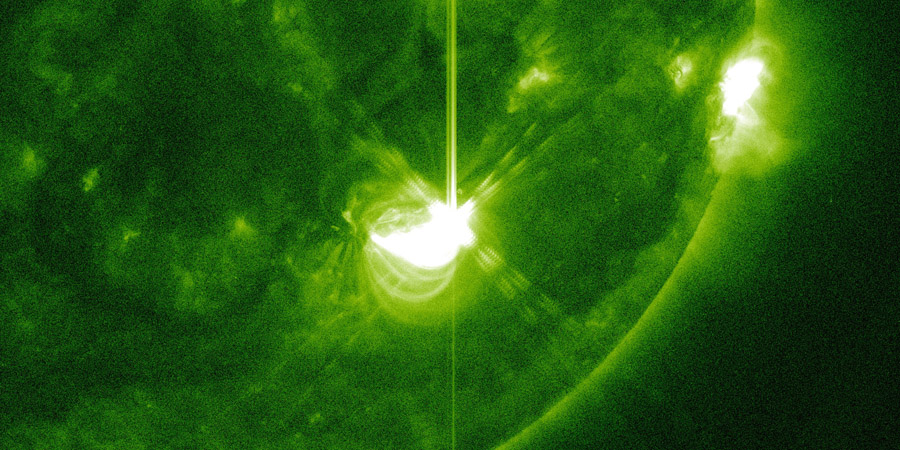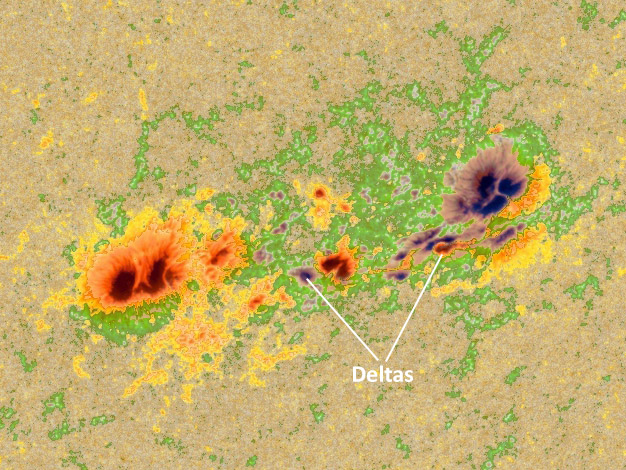More M-class solar flares
Monday, 28 September 2015 16:09 UTC

Our Sun has been very active today with M-class solar flaring from both sunspot region 2422 and 2423. Coronagraph imagery is limited but it does not look like any of these events produced any earth-directed coronal mass ejections.
The most interesting solar flare came from sunspot region 2422 which produced it's strongest solar flare thus far: M7.6 (R2-moderate) peaking at 14:58 UTC. The solar flare was very isolated and took place near the leading delta sunspot. Early signs indicate that this impulsive solar flare likely didn't launch a coronal mass ejection.
Strong M7.63 solar #flare from #sunspot region 12422 - Follow live on http://t.co/XHATH0OOfT pic.twitter.com/xGrZFWhBhr
— SpaceWeatherLive (@_SpaceWeather_) 28 september 2015
Not all hope is lost however, there are two delta sunspots in this group and it remains a very dynamic sunspot region with many spots moving around causing pretty much constant C-class flaring at the moment. More M-class (R1-R2) events remain possible in the hours ahead.
Image: Sunspot region 2422 as seen by NASA SDO. Delta sunspots are indicated.
Thank you for reading this article! Did you have any trouble with the technical terms used in this article? Our help section is the place to be where you can find in-depth articles, a FAQ and a list with common abbreviations. Still puzzled? Just post on our forum where we will help you the best we can!
Latest news
Latest forum messages
Support SpaceWeatherLive.com!
A lot of people come to SpaceWeatherLive to follow the Sun's activity or if there is aurora to be seen, but with more traffic comes higher server costs. Consider a donation if you enjoy SpaceWeatherLive so we can keep the website online!

Space weather facts
| Last X-flare | 2025/03/28 | X1.1 |
| Last M-flare | 2025/03/31 | M1.2 |
| Last geomagnetic storm | 2025/03/27 | Kp5 (G1) |
| Spotless days | |
|---|---|
| Last spotless day | 2022/06/08 |
| Monthly mean Sunspot Number | |
|---|---|
| February 2025 | 154.6 +17.6 |
| March 2025 | 127 -27.6 |
| Last 30 days | 127 -25.7 |



